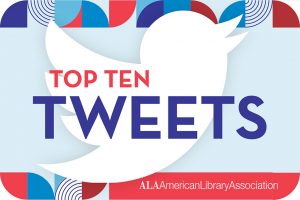Mailings and self-responses for the 2020 Census start in March, and information professionals can expect a variety of questions from community members about the count:
- Who sees my data?
- Do you need an ID to fill out a census form?
- Who should I include on my form?
“People are afraid to answer the census, that’s what our research has shown,” Burton Reist, assistant director for communications for the US Census Bureau, told attendees at “2020 Census: How Libraries Can Support a Complete Count,” a program at the American Library Association’s Midwinter Meeting & Exhibits on January 25 at the Pennsylvania Convention Center in Philadelphia. “It’s when you talk to the people you reach, that’s what brings the message home.”
The answers to the above questions, by the way:
- The US Census Bureau, by law, cannot share your personal information with any other agencies (“it would take an act of Congress to force us to turn the data over,” said Reist, “and I am really quite confident that we will not be put into that position”)
- an ID is not needed to fill out the form
- everyone living in the household should be included on a form
Reist was joined by Ana Ndumu (assistant professor at University of Maryland, College Park), Kelvin Watson (director of Broward County [Fla.] Libraries), and Larra Clark (deputy director at the Public Library Association and ALA’s Public Policy and Advocacy Office), to talk about the significance of the decennial count, marketing efforts libraries are undertaking to encourage participation, and the most common concerns to anticipate once the process is underway.
“I know you know this is important, or you wouldn’t be here,” said Clark. “The 10 minutes it takes to fill out the form will have a 10-year impact,” she said, referring to the distribution of billions of dollars in federal funding for programs and services communities rely on. She also directed attendees to ALA’s updated Libraries’ Guide to the 2020 Census.
Watson explained how Broward County Libraries got started planning its census efforts in early 2019, focusing on a theme of “inviting the uninvited.” The library has been promoting the census through bookmarks, newsletters, social media, and even book checkout receipts. “This census is critical to us,” he said. “[Our community members’] data is money in our wallets.”
For Ndumu, whose Counted In project focuses on immigrants—a historically undercounted group in the census—and includes a toolkit and marketing materials, it’s important that people understand their response matters. “The census represents literal social inclusion,” she said. “Not everyone [in the US] can vote, but everyone can fill out the census.”
Reist noted that librarians and library workers are strategically positioned to make a difference. “Libraries are trusted,” he said. “Some of the things [Watson and Ndumu] said, we as census workers can’t say, but you can. Community leaders take it to their people.”

